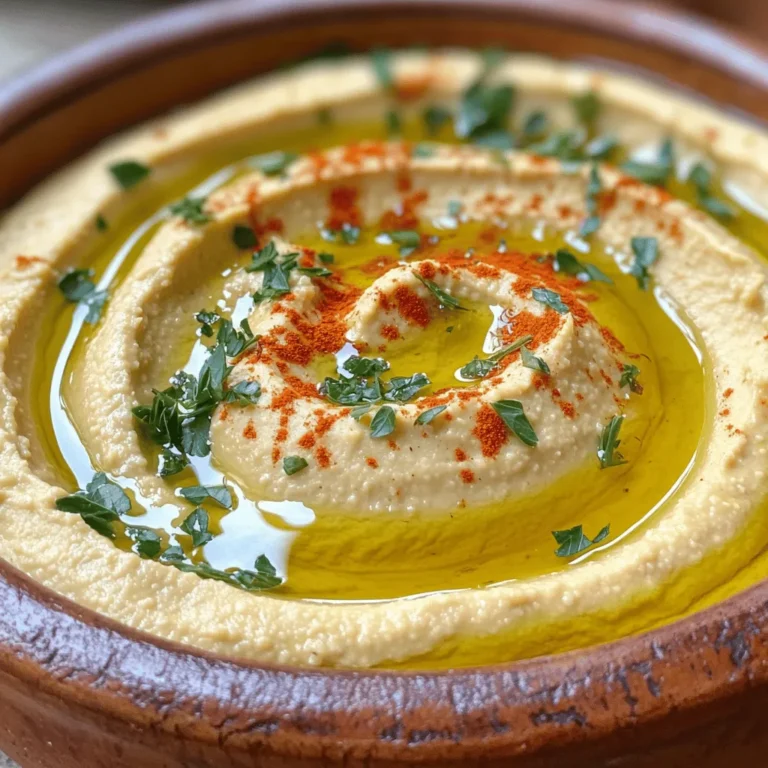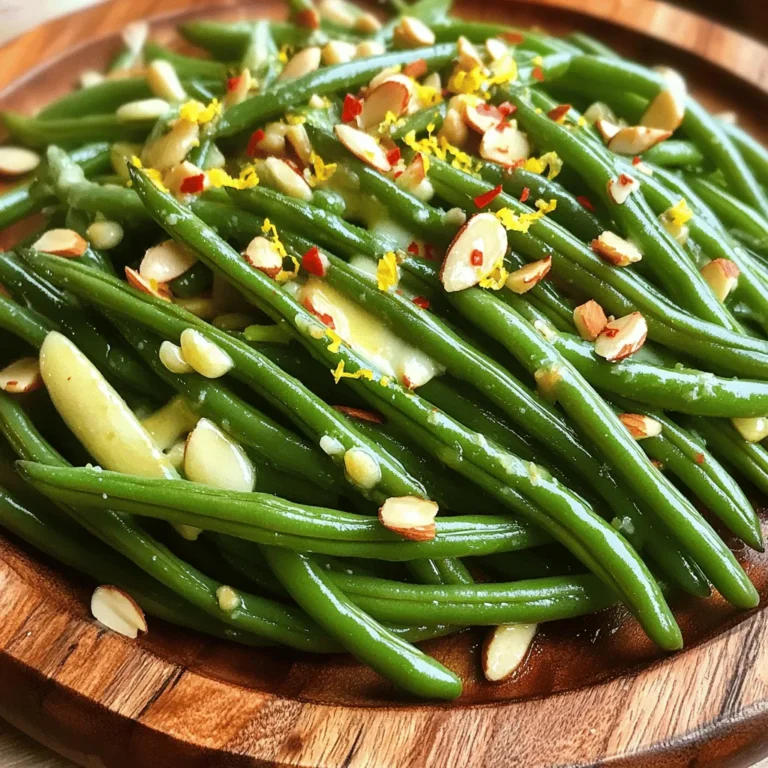Classic Greek Salad Fresh and Flavorful Recipe
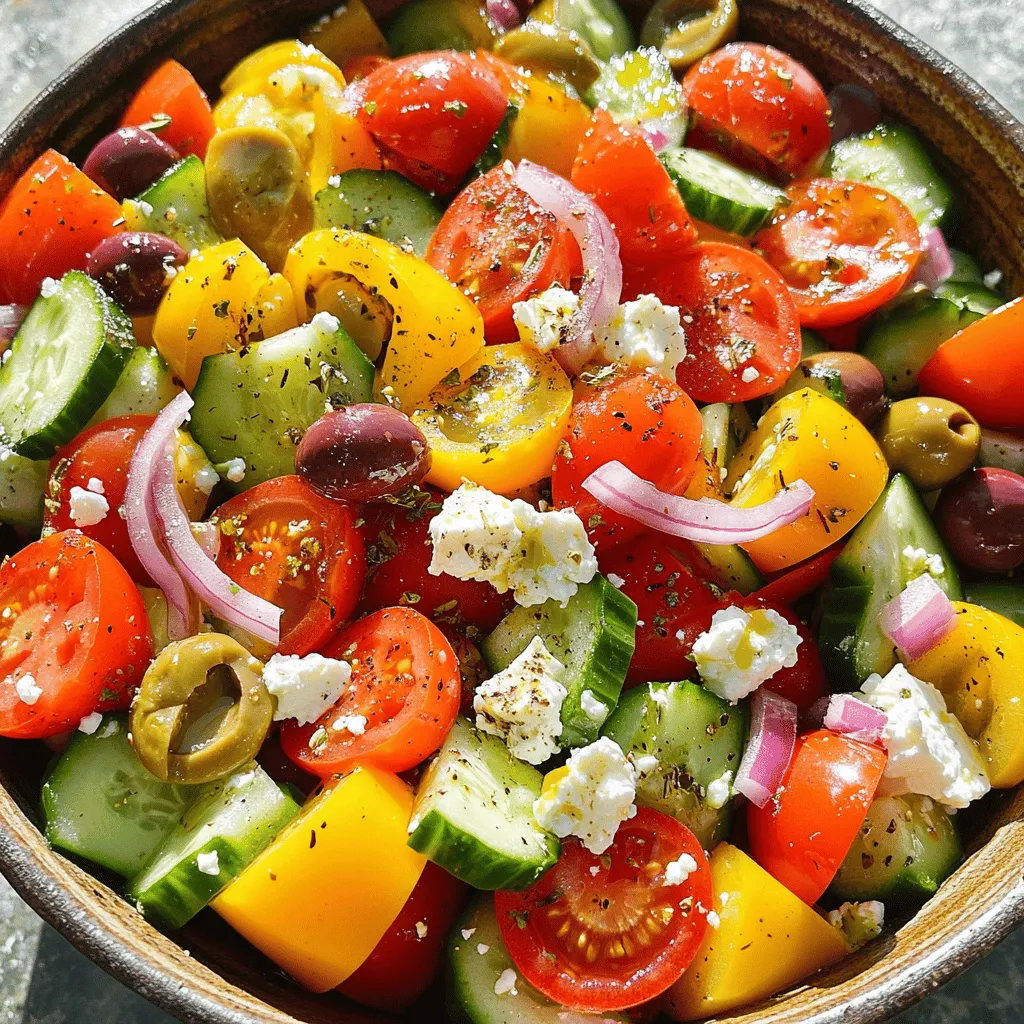
Are you ready to dive into a dish that’s both fresh and bursting with flavor? I’m excited to share my Classic Greek Salad recipe with you. This vibrant mix of veggies, tangy feta, and zesty dressing captures the essence of Greece. Whether you’re a seasoned cook or a kitchen newbie, you’ll love how easy and rewarding this dish is to make. Let’s get started on creating a salad that will impress everyone!
Ingredients
Key Ingredients for Classic Greek Salad
To make a classic Greek salad, you need fresh, high-quality ingredients. Here’s what you’ll want:
– 4 ripe tomatoes, diced into bite-sized pieces
– 1 medium cucumber, peeled and diced
– 1 medium red onion, finely sliced
– 1 bell pepper (preferably green or yellow), chopped into chunks
– 200g feta cheese, crumbled or cubed
– 100g Kalamata olives, pitted and halved
– 3 tablespoons high-quality extra-virgin olive oil
– 2 tablespoons red wine vinegar (you can use fresh lemon juice instead)
– 1 teaspoon dried oregano
– Salt and freshly cracked black pepper to taste
These ingredients create a salad that bursts with flavor. The tomatoes provide juiciness, while cucumbers add crunch. Feta cheese brings creaminess, and olives add a salty bite.
Optional Ingredients for Added Flavor
While the classic recipe is delicious, you can add more ingredients for extra flavor. Consider these options:
– Fresh herbs like parsley or dill for a bright taste
– Avocado for creaminess and healthy fats
– Capers for a tangy kick
– Artichoke hearts for a unique twist
Feel free to mix and match to find your favorite combinations!
Ingredient Substitutions
You might not have all the ingredients on hand. Here are some easy swaps:
– Use cherry tomatoes instead of larger tomatoes for sweetness.
– Swap the cucumber for zucchini for a different texture.
– Replace Kalamata olives with green olives if you prefer.
– Try goat cheese instead of feta for a tangy flavor.
These substitutions allow you to customize the salad to your liking. For the full recipe, check out Sunny Greek Delight. Enjoy your delicious creation!
Step-by-Step Instructions
Preparation of Vegetables
To start, gather your fresh vegetables. You will need ripe tomatoes, a cucumber, a red onion, and a bell pepper. Dice the tomatoes into bite-sized pieces. Peel and dice the cucumber, making sure the pieces are even. Slice the red onion finely, so it blends well. Chop the bell pepper into chunks. Add all these vegetables into a large salad bowl. Mix gently, so you don’t crush them.
Combining Ingredients
Next, it’s time to combine the salad. Carefully fold in the feta cheese. You can crumble it or cut it into cubes, whichever you prefer. Add the Kalamata olives, too. They add a nice briny taste. Be gentle while mixing, as you want the feta to stay intact. This will help keep the salad looking fresh and colorful.
Making the Dressing
Now, let’s make the dressing. In a small bowl, whisk together olive oil, red wine vinegar, and dried oregano. If you like, you can use fresh lemon juice instead of vinegar. Add a sprinkle of salt and pepper for flavor. Whisk until everything is mixed well. Pour this dressing over your salad. Toss it gently to coat all the ingredients. Taste the salad and adjust the seasoning as you like. You can add more salt, pepper, or lemon juice to suit your taste.
For the complete recipe, check out the Full Recipe. Enjoy your fresh and flavorful Greek salad!
Tips & Tricks
Best Practices for Fresh Ingredients
When making a Greek salad, fresh ingredients are key. Look for ripe tomatoes, firm cucumbers, and crispy bell peppers. Always choose high-quality feta cheese. If you can, find Kalamata olives. Their rich taste adds depth. Wash all veggies well before cutting them. This step ensures your salad is clean and safe. Use a sharp knife to cut. It helps keep the veggies looking neat.
How to Perfect the Dressing
For a great dressing, mix extra-virgin olive oil with red wine vinegar. Use a ratio of about 3:1. This balance gives a nice flavor. Add dried oregano for that classic Greek taste. Whisk the dressing well until blended. Taste it before adding more salt or pepper. You want it to enhance the salad, not overpower it.
Serving Suggestions
Serve the Greek salad on a large platter for a bright display. You can also place it in a bowl for easy serving. Garnish with whole Kalamata olives and a sprinkle of oregano. This adds color and flair. Enjoy it as a side dish or a light meal. Pair it with fresh bread or grilled meats. This salad shines in summer but is great year-round. For the full recipe, check out the Sunny Greek Delight.
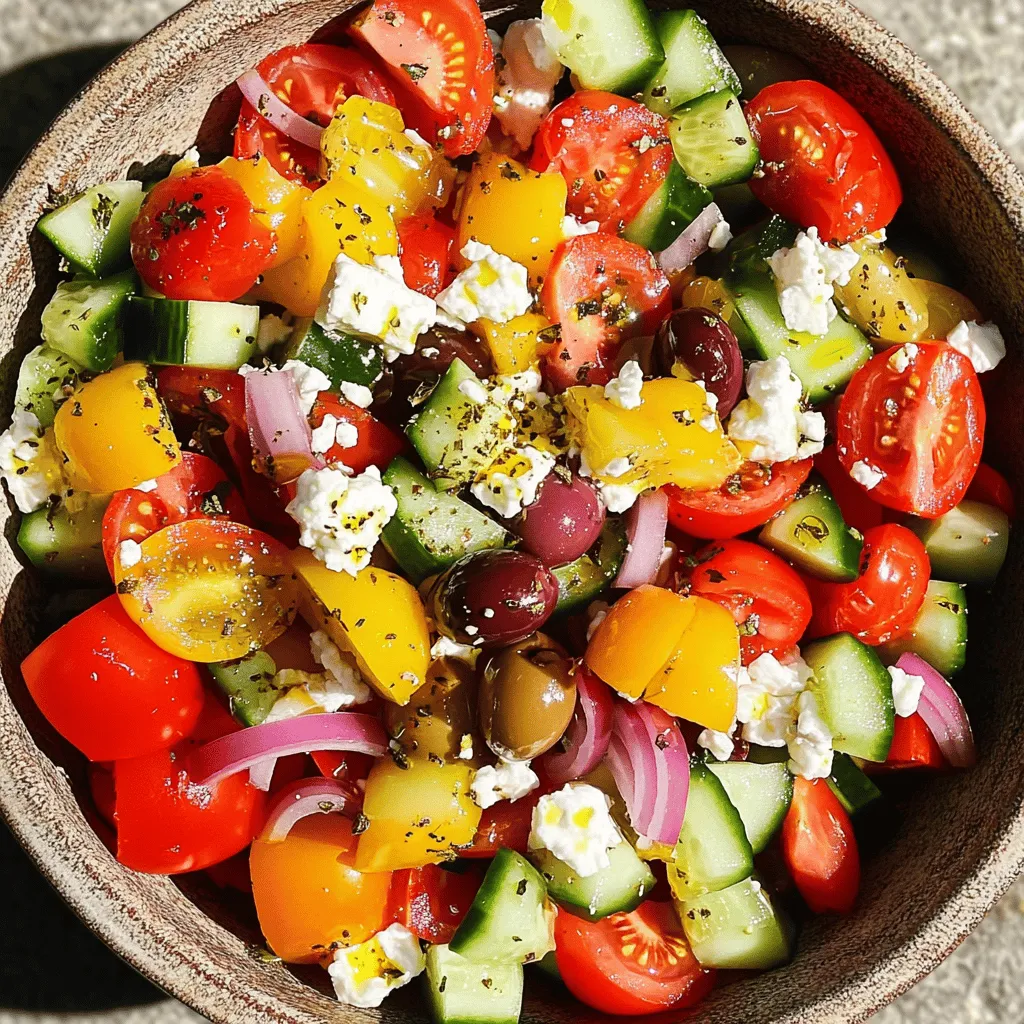
Variations
Traditional Variations (Additions & Substitutions)
You can make a Greek salad your own with some fun additions. Try adding capers for a briny kick. You might also enjoy avocados for creaminess. If you like heat, add sliced jalapeños or a dash of chili flakes. For a twist, swap out feta for ricotta or goat cheese. This can change the taste but keep it fresh.
Regional Variants from Greece
In Greece, different areas have their own salad styles. In Crete, they often add barley rusks, giving a chewy texture. The islands might use fresh seafood, like shrimp or octopus, for a beachy vibe. Some regions include artichokes or sun-dried tomatoes, adding depth. Each variant reflects local flavors and traditions, making every bite unique.
Dietary Modifications (Vegan, Low-carb)
You can easily make Greek salad fit your diet. For a vegan option, skip the cheese and add marinated tofu. You can also use more olives for extra flavor. If you are watching carbs, reduce the tomatoes and cucumbers. You can add more greens like spinach or arugula. This keeps the salad light but still satisfying. Explore these options to create your perfect salad. For the full recipe, check out Sunny Greek Delight.
Storage Info
How to Store Leftover Greek Salad
To store leftover Greek salad, place it in an airtight container. Make sure to keep it in the fridge. It can stay fresh for about two days. If you have dressed the salad, the veggies may get soggy. Store the dressing separately if possible. When you want to eat it again, add fresh dressing for the best taste.
Best Practices for Keeping Ingredients Fresh
To keep your salad ingredients fresh, focus on proper storage. For tomatoes, keep them at room temperature. Cucumbers and bell peppers do well in the fridge. Store feta cheese in its brine or olive oil. This helps maintain its flavor and texture. Kalamata olives can also stay fresh in their original jar. Use them within a few weeks for the best taste.
Reheating Recommended Methods
While you can eat Greek salad cold, reheating is not common. If you want to warm it up, do it gently. Use a pan on low heat and stir often. This keeps the veggies crunchy. However, reheating may change the texture of the feta cheese. I recommend enjoying the salad fresh for the best experience. For a full recipe, check out the Sunny Greek Delight.
FAQs
What is a Classic Greek Salad made of?
A Classic Greek Salad has simple, fresh ingredients. It includes ripe tomatoes, cucumber, red onion, and bell pepper. You also add feta cheese and Kalamata olives. The salad shines with a dressing made of olive oil and red wine vinegar. Dried oregano provides extra flavor.
Can I make Greek Salad ahead of time?
Yes, you can make Greek Salad ahead. However, the best taste comes when it is fresh. If you prepare it early, keep the dressing separate. This way, the vegetables stay crisp. Mix the salad just before serving for the best flavor.
What dressing is best for Greek Salad?
The best dressing for Greek Salad is a mix of olive oil and red wine vinegar. You can also use fresh lemon juice for a zesty twist. This dressing enhances the salad’s flavors and ties all the fresh ingredients together.
Is Greek Salad healthy?
Yes, Greek Salad is healthy. It is low in calories and high in nutrients. The fresh veggies provide vitamins and minerals. Feta cheese adds protein and calcium, while olives offer healthy fats. Enjoy this salad as a tasty, nutritious option! For the full recipe, check out the Sunny Greek Delight!
Greek salad combines fresh ingredients, simple steps, and flavorful variations. We explored the key ingredients and how to prepare them. Tips helped to keep your salad fresh and tasty. Don’t forget to try regional and dietary variations for more options. For storage, use the best methods to maintain quality.
Enjoy making your Greek salad, packed with nutrition and flavor. You now have the knowledge to create the perfect dish. Dive in and share your creations!
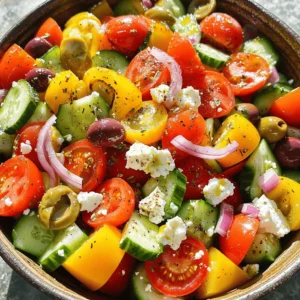

![- 1 lb Brussels sprouts, trimmed and halved - 3 tablespoons balsamic vinegar - 2 tablespoons extra virgin olive oil - 1 tablespoon honey (or maple syrup for a vegan option) - 3 cloves garlic, finely minced - 1/4 cup crushed walnuts (for added texture) - 1/4 cup grated Parmesan cheese (for a savory finish) - Fresh parsley for garnish - Salt and freshly cracked black pepper, to taste I love using fresh Brussels sprouts for this dish. They become sweet and crispy when roasted. For the main ingredients, you need Brussels sprouts, balsamic vinegar, olive oil, and honey. This mix gives depth and sweetness to the sprouts. If you want to enhance the flavor, consider adding garlic. It brings a nice kick. Crushed walnuts add crunch, while Parmesan provides a cheesy layer. Fresh parsley brightens the dish and makes it pretty on the plate. For seasoning, keep it simple. Salt and cracked black pepper bring out the natural taste. This recipe is flexible, so feel free to skip the optional ingredients if you prefer. For the full recipe, check out the detailed instructions. Start by trimming the Brussels sprouts. Cut off the tough ends and remove any yellow leaves. Then, cut each sprout in half. This helps them cook evenly and become crispy. Next, mix the marinade ingredients. In a large bowl, add the halved Brussels sprouts. Pour in 3 tablespoons of balsamic vinegar and 2 tablespoons of extra virgin olive oil. Add 1 tablespoon of honey or maple syrup for sweetness. Finely mince 3 cloves of garlic and add them to the bowl. Season with salt and freshly cracked black pepper. Toss everything together until the sprouts are well-coated. Preheat your oven to 400°F (200°C). This high heat will give your Brussels sprouts a nice caramelization. Prepare a baking sheet by lining it with parchment paper. This makes cleanup easy and helps prevent sticking. Spread the Brussels sprouts on the baking sheet in a single layer. Make sure they are spaced out; this allows hot air to circulate around each sprout for even roasting. Bake the sprouts in the oven for 20-25 minutes. Halfway through, stir the sprouts to ensure they roast evenly. This step is key for achieving that perfect crispy texture. If using crushed walnuts, sprinkle them over the Brussels sprouts during the last 5 minutes of roasting. This adds a delightful crunch. Once the sprouts are golden-brown and crispy, take them out of the oven. Transfer them to a serving dish while warm. If desired, sprinkle 1/4 cup of grated Parmesan cheese over the sprouts for a savory finish. Finally, garnish with finely chopped fresh parsley. This adds a pop of color and freshness. Serve your balsamic roasted Brussels sprouts warm and enjoy! For the full recipe, check out the details above. To get the best texture, spacing is key. Place Brussels sprouts in a single layer on the baking sheet. This allows hot air to flow around each piece, giving you that nice, crispy finish. If they are too close, they will steam instead of roast. Roasting times can vary based on your oven type. Most home ovens work well at 400°F for 20-25 minutes. If your oven runs hot or cold, check your sprouts at the 15-minute mark. Remember, you want a golden-brown color on the outside. Spices and herbs can elevate your dish. Try adding a pinch of red pepper flakes for heat or thyme for a fresh taste. These small additions make a big difference. For balsamic glaze variations, consider mixing in maple syrup or a splash of orange juice. These tweaks add new layers of flavor and keep the dish exciting. To serve beautifully, use a decorative platter. Arrange the Brussels sprouts in a circle, and drizzle with extra balsamic glaze. This will catch the eye and make the dish pop. Garnishes help too. Sprinkle fresh parsley on top for a splash of color. You can also add lemon zest for a bright finish. These little touches make your dish look and taste gourmet. For a full recipe, check out the instructions above. Enjoy your cooking! {{image_4}} For a vegan twist on Balsamic Roasted Brussels Sprouts, swap honey for maple syrup. This keeps the dish sweet without using animal products. You can also use plant-based cheese instead of Parmesan. Look for brands that melt well and add a cheesy flavor. Want to jazz up your Brussels sprouts? Add crispy bacon or dried cranberries for a fun mix of flavors. You can also try using different vinegars, like apple cider or red wine vinegar, for a unique taste. Changing the oil can also make a difference. Try using avocado oil for a rich, buttery flavor. You can cook Brussels sprouts in various ways. Air frying gives them a nice crunch and saves time. Just set the air fryer to 375°F and cook for about 15 minutes. For stovetop sautéing, heat olive oil in a pan. Add the Brussels sprouts and cook for 10-15 minutes until they are tender and golden. Don't forget to check the [Full Recipe] for more details! To keep your Balsamic Roasted Brussel Sprouts fresh, store them in an airtight container. Place them in the fridge right after they cool down. They will stay fresh for about 3 to 5 days. Make sure to check for any signs of spoilage before eating. When you want to enjoy your leftovers, the best method is to use the oven. Preheat your oven to 350°F (175°C). Spread the Brussels sprouts on a baking sheet and bake for about 10 to 15 minutes. This helps them regain their crispiness. You can also use a skillet over medium heat, stirring often until hot. Yes, you can freeze Balsamic Roasted Brussel Sprouts! To freeze, let them cool completely. Then, place them in a freezer-safe bag or container. They can last up to 3 months in the freezer. When ready to eat, thaw them in the fridge overnight. Reheat them in the oven to keep them crispy. Enjoy the delicious flavors even after freezing! To make Balsamic Roasted Brussel Sprouts, you first gather your ingredients. You need Brussels sprouts, balsamic vinegar, olive oil, honey, garlic, salt, and pepper. You can also add walnuts and Parmesan if you like. Start by preheating your oven to 400°F (200°C). Next, trim and halve the Brussels sprouts. In a bowl, mix them with olive oil, balsamic vinegar, honey, minced garlic, salt, and pepper. Make sure each sprout gets coated well. Then, spread them on a baking sheet. Roast for 20-25 minutes, stirring halfway. This helps them cook evenly. If using walnuts, add them five minutes before the end. Once roasted, garnish with Parmesan and parsley. For the full recipe, check the section above. Yes, you can use frozen Brussels sprouts. They save time and are easy to find. However, there are pros and cons. Pros: - Convenient and quick to prepare. - Have a long shelf life. Cons: - May not get as crispy as fresh ones. - Can have a more watery texture after cooking. If using frozen sprouts, make sure to thaw and drain them first. This helps reduce excess moisture. Balsamic Roasted Brussel Sprouts pair well with many dishes. Here are some great options: - Grilled chicken or fish for a healthy meal. - Quinoa or rice for a filling side. - A fresh salad for a light touch. - Pasta dishes for a comforting combo. You can also serve them with roasted meats or as part of a vegetable platter. If you want to make more Balsamic Roasted Brussel Sprouts, it's easy to adjust. Here are some tips: - Simply double or triple the ingredients. - Use multiple baking sheets if needed. - Space the sprouts out well to ensure even roasting. Keep the cooking time the same, but check for doneness. You want them crispy and caramelized. Balsamic roasted Brussels sprouts combine simple ingredients for a tasty dish. We discussed key ingredients and helpful tips for perfect roasting. Remember, spacing and timing matter for crispy results. You can also change flavors or cooking methods for variety. Don't forget to store leftovers properly for later enjoyment. Now it's time to get cooking and enjoy this dish that fits any table! A little effort brings great taste.](https://tastyrecipes.blog/wp-content/uploads/2025/06/c517bbea-4856-4258-a4a1-bd02b0855d9d-768x768.webp)

